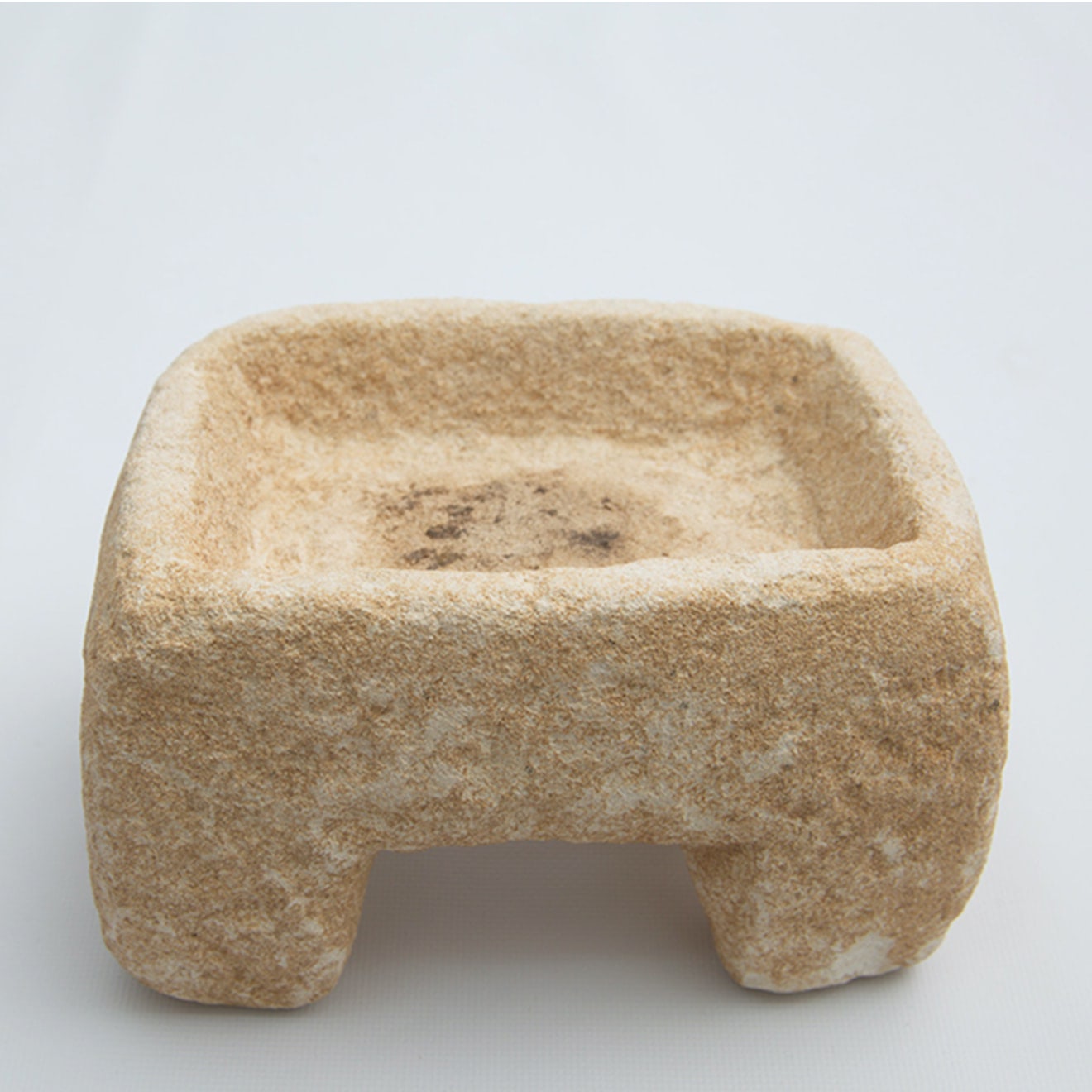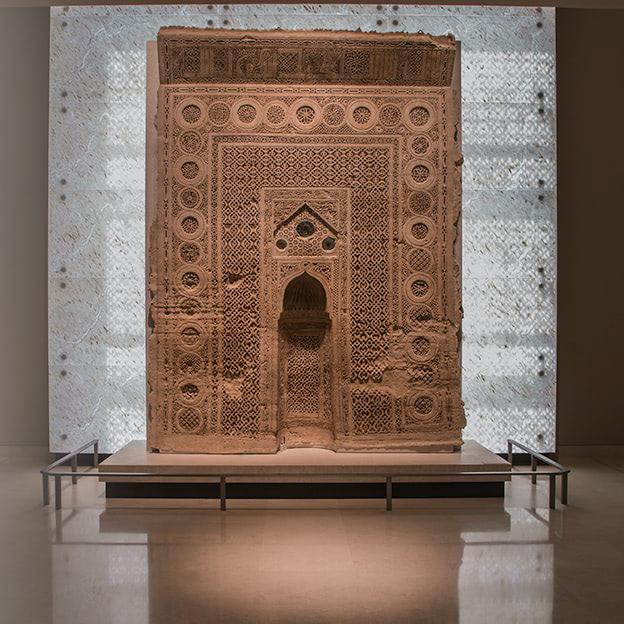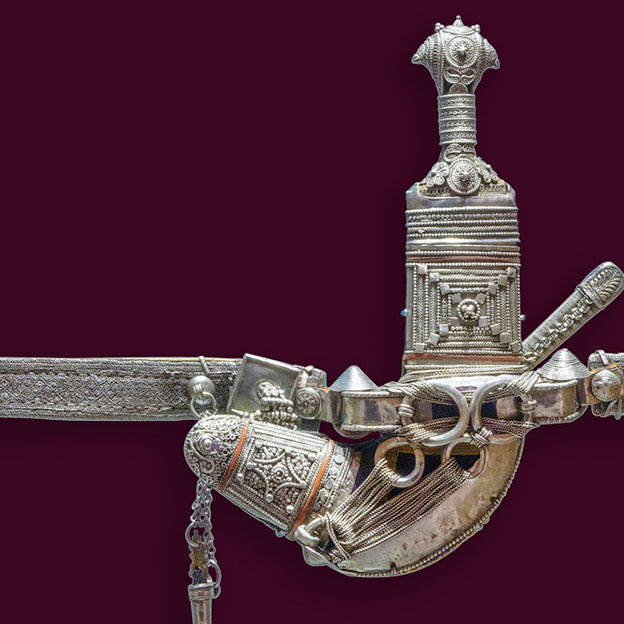

-
Incense Burners (mijmar)
2,500-2,000 BCE (Middle Bronze Age)
The discovery of this locally-made incense burner at Ra's al-Jinz confirms the importance of incense in Oman in the Middle Bronze Age. When the burner was found, it still contained traces of fire residue. It had been left alongside another (broken) burner, suggesting that incense burners may have been common objects in daily life at this time.
Dhofar is one of the few places on Earth where the frankincense tree (Boswellia sacra) naturally thrives. Long-distance trade in frankincense was ongoing by the 3rd millennium BCE and included links to Mesopotamia, Indus and Egypt. In recognition of the importance of the frankincense trade across the ages, four sites have been inscribed on the UNESCO World Heritage Sites list.

-
Niche of al-Uweyna Mosque
1562 CE
The 10th century AH/16th century CE is considered the richest period in producing mosque niches (mihrabs) as masters like Abdullah bin Qasim al-Manahi and the family of Mushmil al-Manahi lived during this time. Talib bin Mushmil al-Manahi made the niche of al-Uweyna Mosque.
The niche on display is covered with geometrical decorations, fine inscriptions, quotes from the Holy Qur'an and inscriptions documenting the names of the builder, designer and the patron. The Islamic declaration of faith (ash-shahādatān) is written in Kufic inscriptions at the upper part of the niche and the outer rectangular frame contains 30 seals with floral decoration. The niche itself sits in the cove of the inner frame with a rectangular shape above it baring inscriptions in two triangles and three plates of glazed Chinese pottery in the centre.

-
Saidi-style Khanjar
19th-20th c CE
Daggers have been used in Oman since at least the 3rd millennium BCE, and even in the distant past they appear to have fulfilled a ceremonial as well as practical purpose. Early daggers from archaeological contexts are invariably straight-bladed, and the origins of the broad, curved blade which typifies the present-day Omani khanjar remain enigmatic, but literary and iconographic evidence suggests the development of an increasingly curved dagger starting in the 15th-16th century CE.
This saidi-style khanjar, named after the royal house of al-Busaid. It features a rhinoceros horn hilt and a silver-embroidered leather belt with a silver buckle. A cartridge-shaped tweezers set is affixed to the belt and an auxiliary knife is fitted into a leather sheath on the back of the scabbard. The decoration on the hilt and scabbard of the khanjar include chased, stamped and applied work, filigree and granulation.
